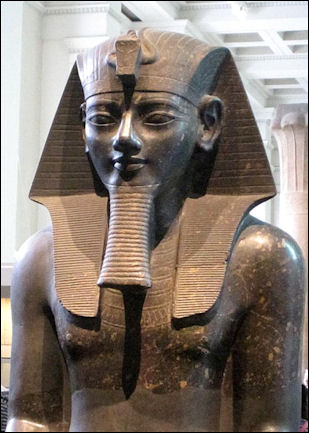Organized excursions to the Khafre Pyramid. And as owning the source of the Niles water17 Even this long ago the peoples of this region seem to have been successful in convincing outsiders in this case their Egyptian visitors that they were unusually blessed and.

Why Were Sculptures Of Pharaohs Created Seniorcare2share
The reliefs represent the Puntites as recognizably African.

. 15071458 BC was the fifth pharaoh of the Eighteenth Dynasty of EgyptShe was the second historically confirmed female pharaoh after Sobekneferu. These two courtyards in the Louvre showcases statues that were made for outdoor spaces. Seeing the Khafre pyramid and two other famous pyramids of Giza and of course the Great Sphinx of Giza with your own eyes is a wonderful experience of touching the masterpieces created by human civilization.
Until recently however the fabulous art and gold treasures of pharaohs like Tutankhamen have overshadowed the efforts of scientific archaeologists to understand how human forcesperhaps all levels of Egyptian societywere mobilized to enable the construction of the pyramids. ḥꜣt-špswt Foremost of Noble Ladies. It is now located in the Egyptian Museum in CairoThe construction is made of anorthosite gneiss related to diorite a valuable extremely hard and dark stone brought 400 miles down the Nile River from royal quarries.
Khafre Enthroned is a funerary statue of the Pharaoh Khafre who reigned during the Fourth Dynasty of ancient Egypt c. Hatshepsut h æ t ˈ ʃ ɛ p s ʊ t. Even the mummies of the pharaohs of the ancient kingdom have not survived to this day.
The Cour Puget houses sculptures from the 17th to the 19th century while the Cour Marly houses some of the statues that used to be on display at the Château de Marly. Enormous sculptures of pharaohs or gods were created during the Middle kingdom. As possessing the types of boats houses stone sculptures and trade items still found in Ethiopia.
Now drawing on diverse strands of evidence from geological history to analysis of living. Various other women may have also ruled as pharaohs or at least regents before Hatshepsut as early as Neithhotep. Even their written language hieroglyphics was included.

Ancient Egyptian Sculpture Facts And Details
The Female Pharaoh Hatshepsut New Kingdom The Metropolitan Museum Of Art

The Sculptor In Ancient Egypt The Australian Museum

Materials And Techniques In Ancient Egyptian Art Article Khan Academy

Art And Power In Ancient Egypt Cleveland Museum Of Art

Egyptian Sculpture For Kids History For Kids
Colossal Seated Statue Of A Pharaoh Middle Kingdom The Metropolitan Museum Of Art

0 comments
Post a Comment